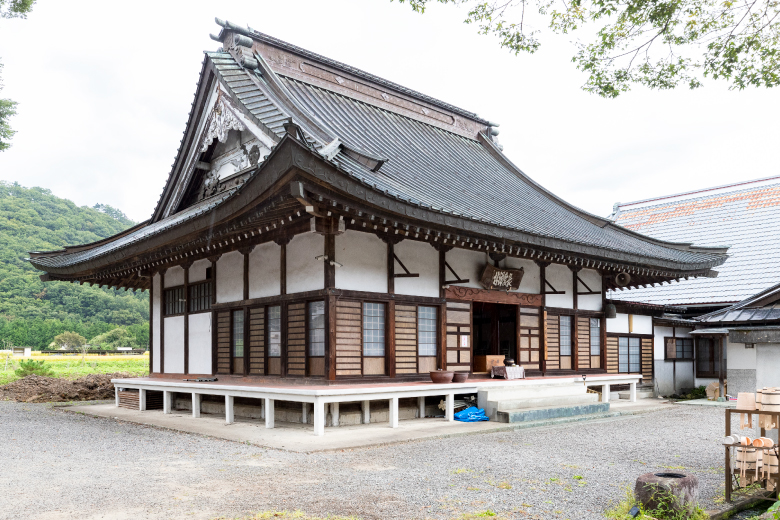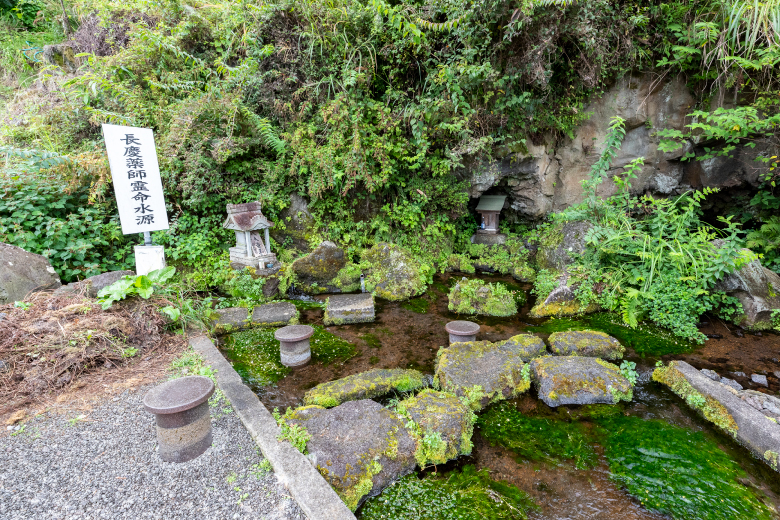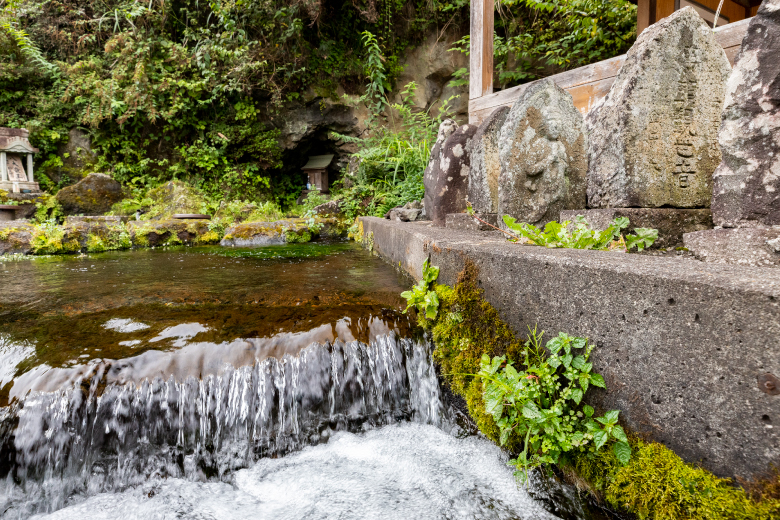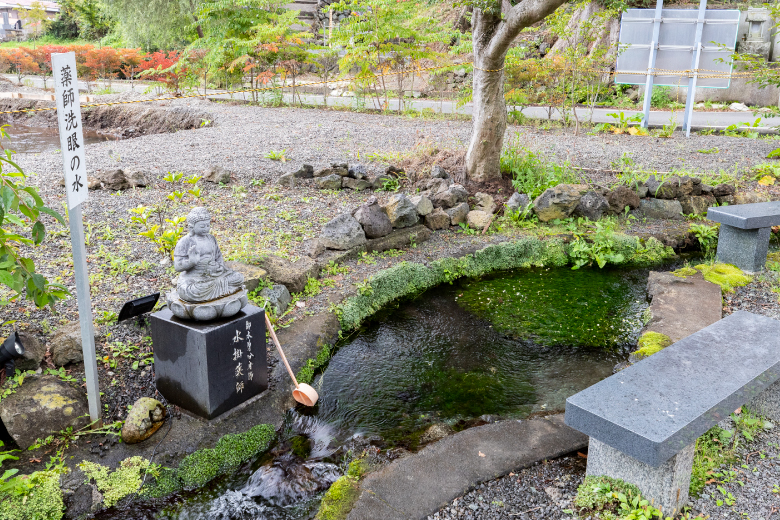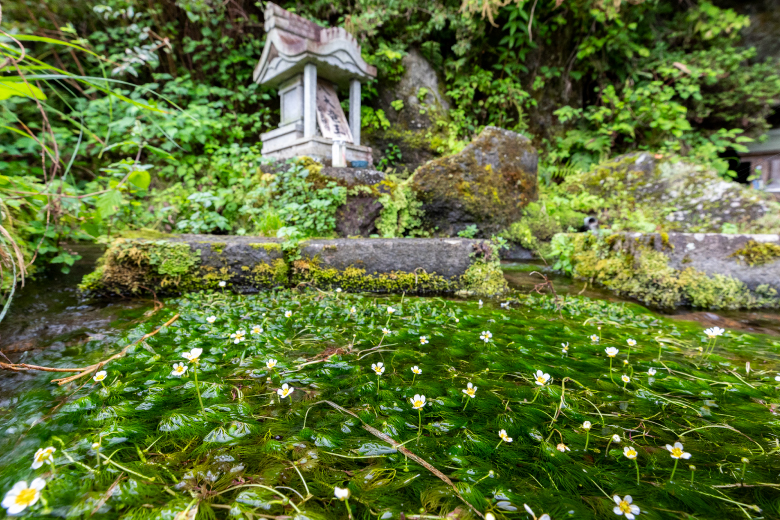Chokei-ji Temple was originally a small hermitage founded by a Tendai sect ascetic in 1462. In 1570, it was made into a temple by Goho Togen, a Zen master associated with Kamakura Kencho-ji Temple. He added a worship hall and converted it to a Zen temple belonging to the Rinzai sect of Buddhism.
The clear spring water that flows near the temple precincts comprise part of the Tokaichiba and Natsugari Springs, selected among the “100 Exquisite and Well-conserved Waters of the Heisei Period.” Affected little by open air, the water is a constant temperature of 13°C throughout the year. A nearby arbor provides a perfect spot to take in the beautiful scenery of the spring water pond and soothing sound of running water.
Baikamo flowers, which grow only in clear flowing water, bloom in profusion in the pond every year between late May and late July and offer a feast for visitors’ eyes. They are aquatic perennials of the ranunculus species, and were named baikamo (literally meaning “plum flower algae”) because they resemble tiny plum blossoms on the water surface.
The clear spring water that flows near the temple precincts comprise part of the Tokaichiba and Natsugari Springs, selected among the “100 Exquisite and Well-conserved Waters of the Heisei Period.” Affected little by open air, the water is a constant temperature of 13°C throughout the year. A nearby arbor provides a perfect spot to take in the beautiful scenery of the spring water pond and soothing sound of running water.
Baikamo flowers, which grow only in clear flowing water, bloom in profusion in the pond every year between late May and late July and offer a feast for visitors’ eyes. They are aquatic perennials of the ranunculus species, and were named baikamo (literally meaning “plum flower algae”) because they resemble tiny plum blossoms on the water surface.
